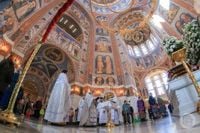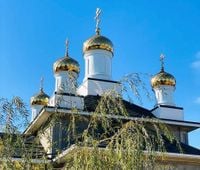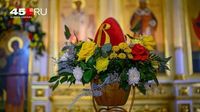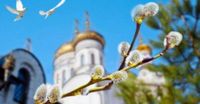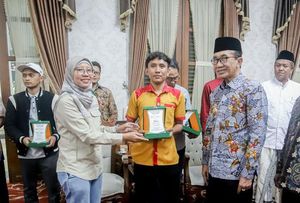On April 20, 2025, Orthodox Christians will celebrate one of the most significant and solemn days in the church calendar: the Holy Christ Resurrection, or Easter. This holiday symbolizes the victory of life over death and faith over despair. Notably, in 2025, the date coincides for Orthodox, Catholic, and most Protestant denominations, a rare occurrence that highlights the unity of the Christian faith.
Easter takes its name from the ancient Hebrew holiday of Pesach, which commemorates the exodus of the Jews from Egypt. For Christians, Easter is a reminder of the resurrection of Jesus Christ on the third day following his crucifixion, an event that lies at the heart of the entire Christian faith. According to Orthodox teaching, the resurrection of the Savior signifies hope for eternal life for all believers. As it is written in the Scriptures, "If Christ has not been raised, your faith is futile" (1 Corinthians 15:17).
The date of Easter is calculated according to the paschalia, a method established in the 4th century at the First Ecumenical Council in Nicaea. According to these rules, Easter is celebrated on different days each year, as its date is tied to the solar-lunar calendar. In 2025, all these conditions coincide on April 20, which falls after the Jewish Passover (Pesach), ensuring that the holiday is observed on a Sunday and during the full moon.
In preparation for Easter, Christians undergo a period of fasting known as Great Lent, which begins on March 3, 2025, and lasts for 40 days. This period is marked by prayer, repentance, and abstinence, reminding believers of the 40 days Jesus spent fasting in the desert. The culmination of this preparation occurs on Great Saturday, when believers gather in churches for an all-night vigil. During this service, special foods such as Easter cakes, cottage cheese Easter, and colored eggs are consecrated, symbolizing new life and purity.
On the evening of April 19, festive church services will be held in all the country's churches, with Metropolitan Alexander leading the night service at the Ascension Cathedral in Almaty. The central event will include the Easter procession, matins, and liturgy, starting at 11:30 PM. One of the main symbols of the holiday will be the Holy Fire, traditionally lit in the Church of the Holy Sepulcher in Jerusalem, which will be delivered to Kazakhstan this year.
As the clock strikes midnight, church bells will announce the Resurrection of Christ and the beginning of the Easter service, which is especially solemn and lasts until morning. After the service, people go outside the church and place their Easter baskets on the ground. In some regions, lit candles are placed in the baskets before consecration, and the priest sprinkles holy water on both the baskets and those who brought them. Some of the consecrated food is reserved for the needy, emphasizing the spirit of sharing and community.
Following the service, families return home and greet one another with the words "Christ is Risen!" to which the response is "Indeed He is Risen!" This exchange, known as the Christian greeting, continues for 40 days until the Feast of the Ascension. The Easter breakfast typically begins with the sharing of a consecrated egg or Easter cake, symbolizing the end of fasting and the joy of the resurrection.
In addition to the solemn celebrations, Easter is also marked by various traditions and folk customs. One popular activity is the egg fight, where participants take boiled, dyed eggs and strike them against one another. The winner is the one whose eggshell remains intact, and this game has gained popularity in countries such as Greece, Romania, and Switzerland. It is believed that victory in the egg fight brings good luck and happiness for the entire year.
On Easter, it is customary to refrain from quarrels, disputes, and any form of negative behavior. The day is dedicated to joy, prayer, and unity among family and friends. Many people gather with relatives and enjoy festive meals together, reinforcing the value of community and togetherness during this significant occasion.
As the celebrations unfold, various folk omens associated with April 20 also come into play. For instance, the first thunder of the year is said to predict a good harvest, while rainy weather might mean a poor honey yield. It is also believed that from this date, one can begin planting crops such as pumpkins, cucumbers, and beans.
In essence, Easter is not only a religious observance but also a time for families to come together, reflect on their faith, and celebrate the triumph of life over death. The convergence of the dates for Orthodox and Catholic Easter in 2025 serves as a poignant reminder of the shared beliefs and values that unite Christians around the world.
As Easter approaches, many will take the opportunity to share greetings and well-wishes with loved ones. The article provides 20 beautiful Easter cards available for download, allowing individuals to express their sentiments and connect with family and friends during this joyous season.
In conclusion, the celebrations surrounding Easter on April 20, 2025, promise to be filled with spiritual significance, communal joy, and cherished traditions that highlight the essence of this sacred holiday.
